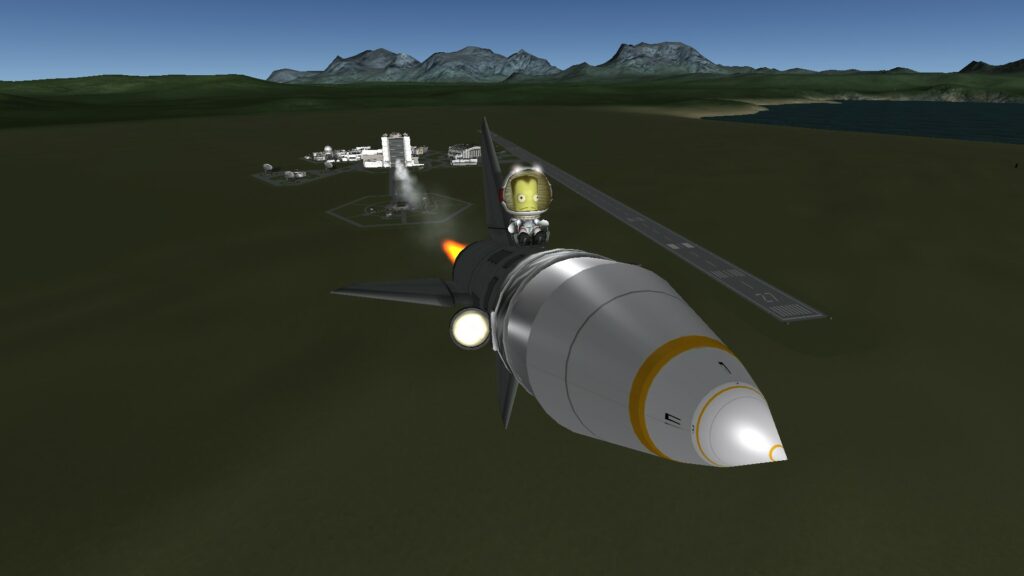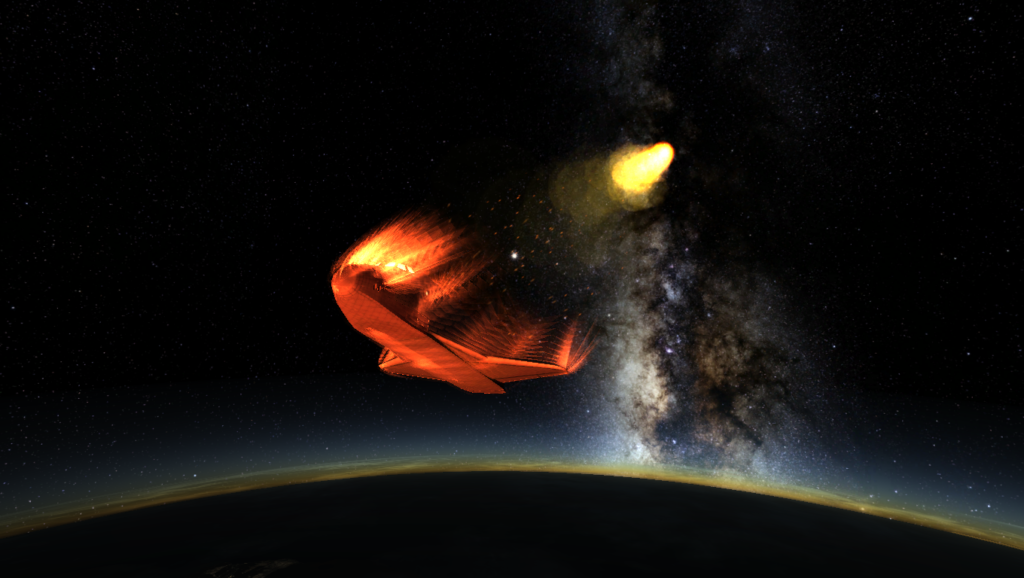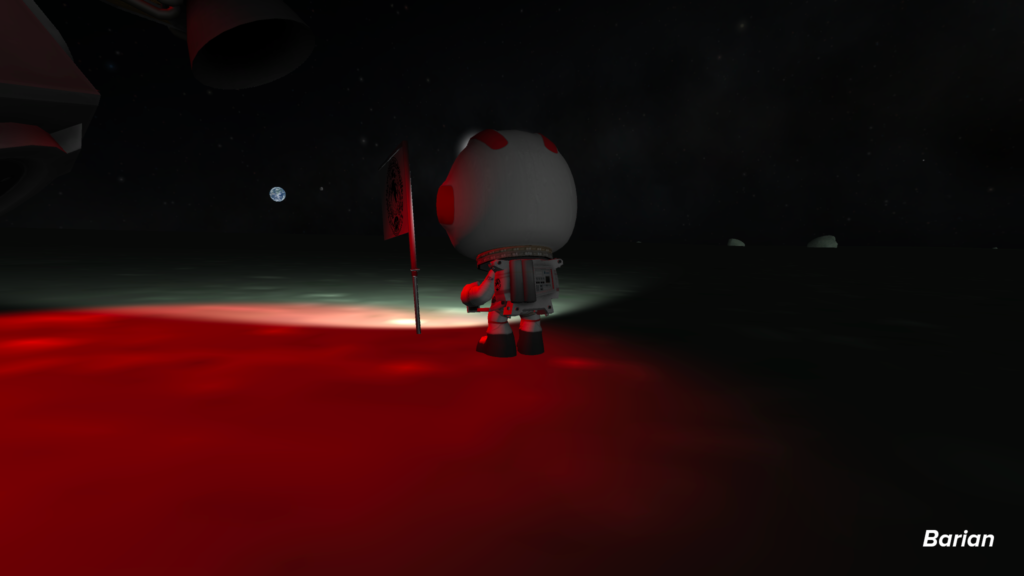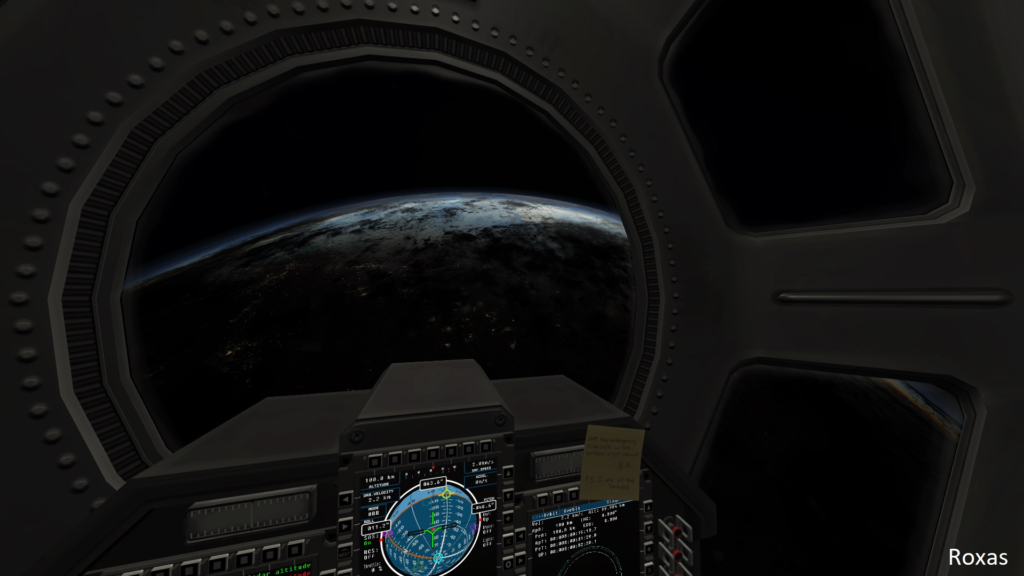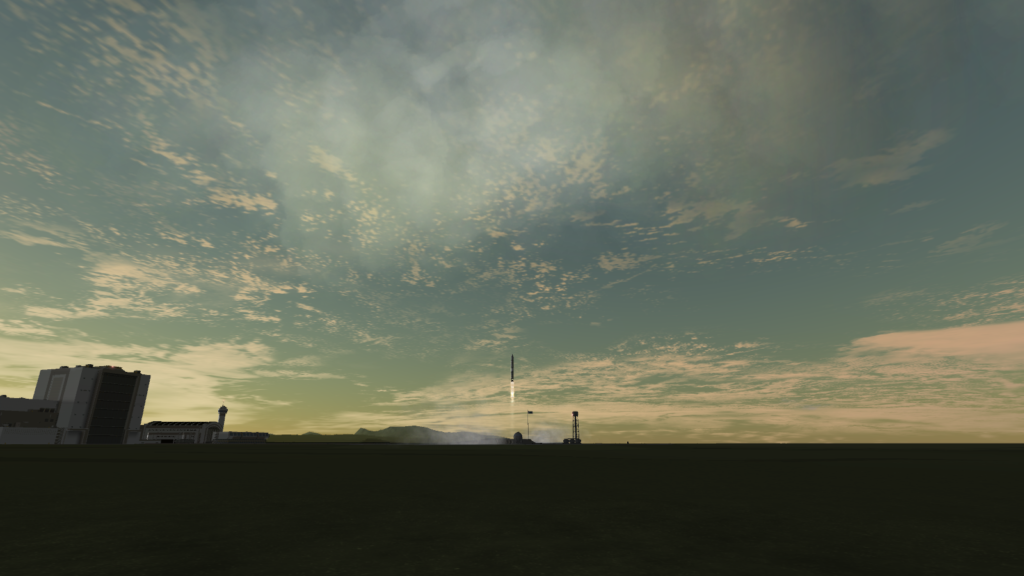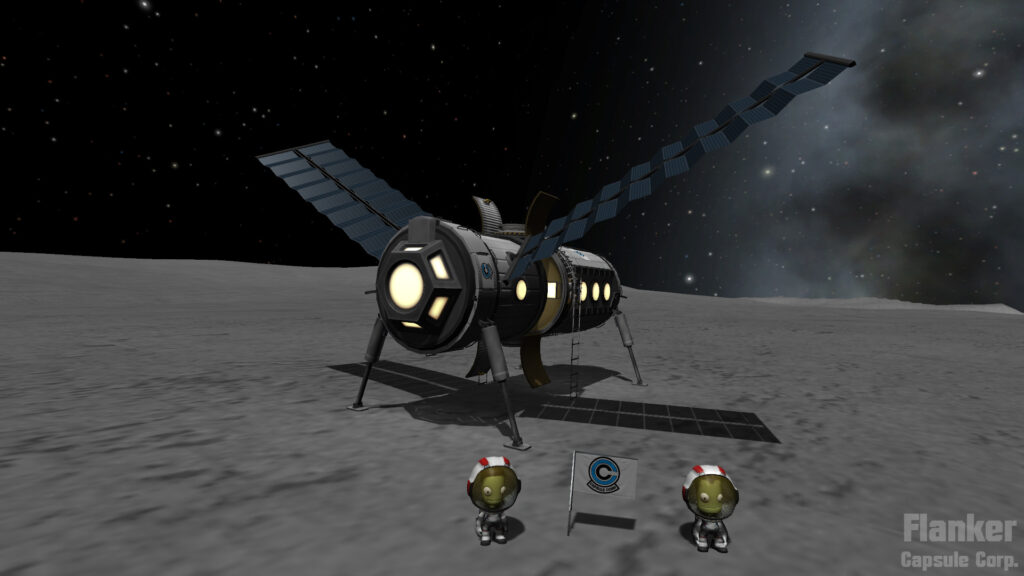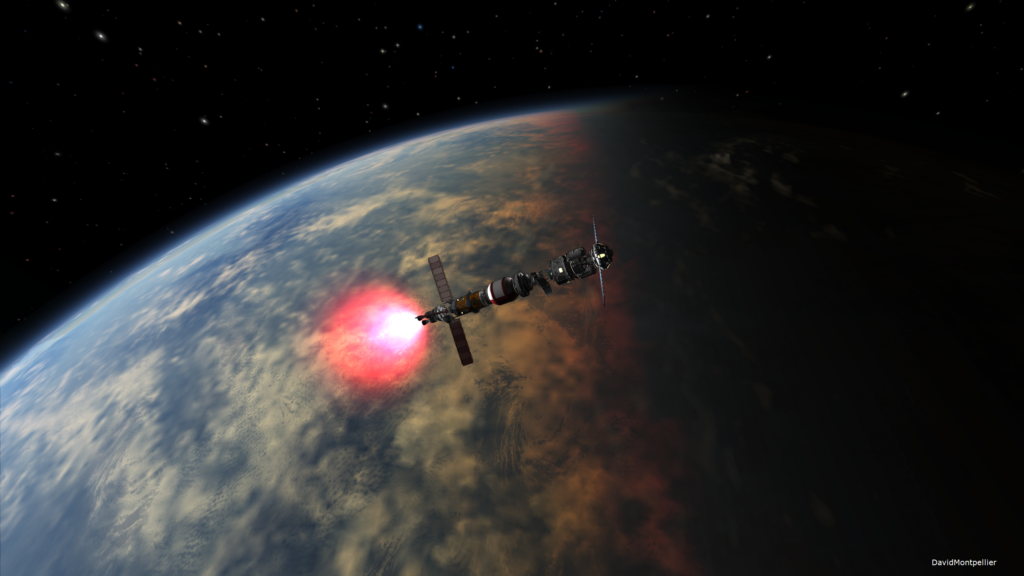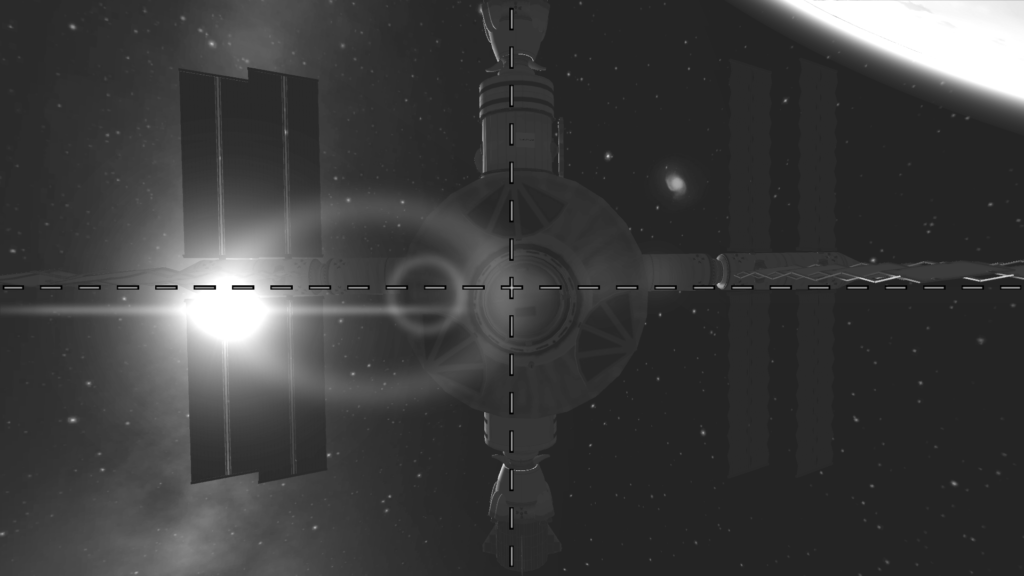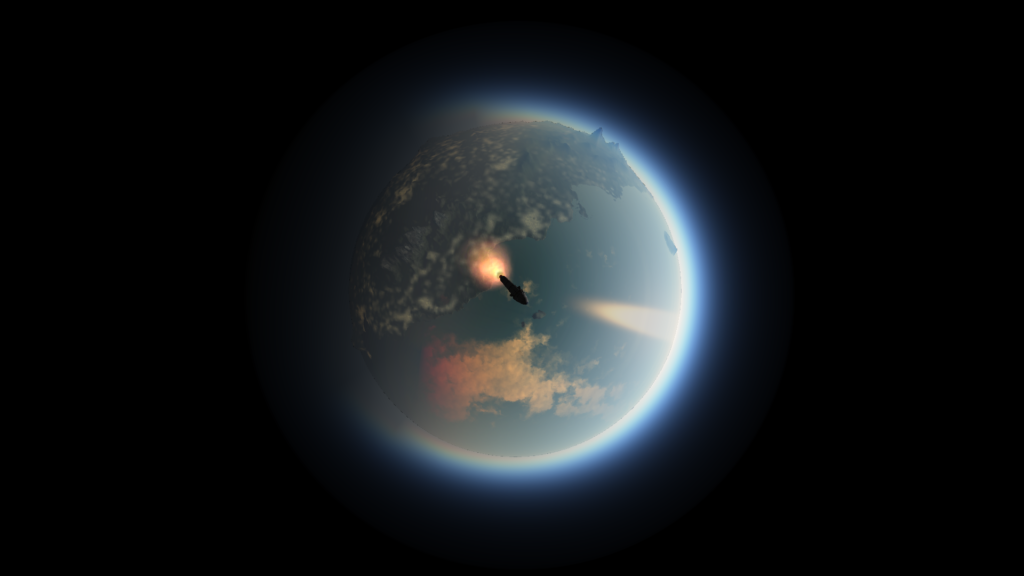I- CONTEXT
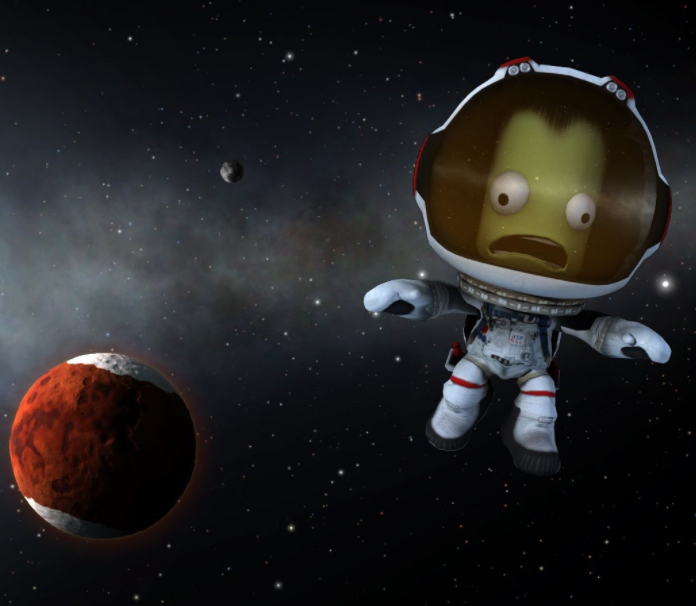
Kerbal Space Program, often abbreviated as KSP, is a game centered around space exploration with a capital “E.” Players are given a palette of “Parts” that make up rocket components, aircraft, and rovers, which they can assemble as they see fit. They can recreate historical spacecraft or let their imaginations run wild to create unique and personal creations. The design phase, which can take anywhere from 20 minutes to 20 hours depending on the player’s dedication, leads to the actual use of the craft. From the launchpad or runway, players can reach for the stars by exploring a system filled with numerous planets and their natural satellites! That is, as long as they don’t explode during liftoff…
To this very general presentation, one must add the enthusiasm and passion that all players encounter during their gameplay: a sense of freedom that’s hard to express and unparalleled in any other game, the ability to assemble massive modular orbital cruisers, construct complete bases on the surface of a small inhabitable moon, prepare the logistics for a comprehensive and complex scientific mission, and arrange a satellite communication network capable of providing 4G coverage to the farthest celestial bodies. KSP is about the thrill of creation, community sharing, and spontaneous and effective cooperation!
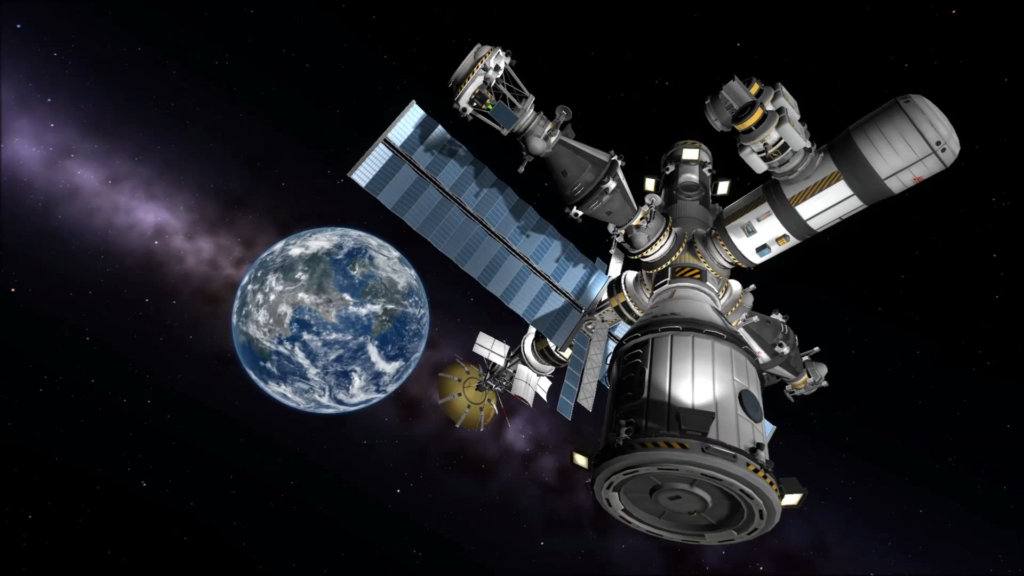
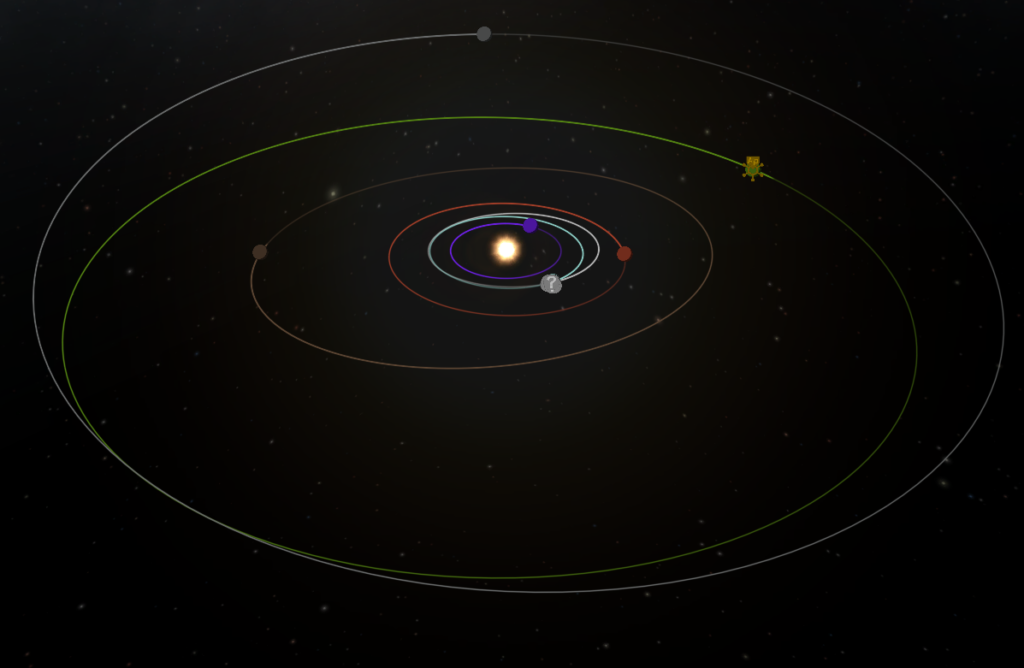
From a more technical perspective, which will interest many, KSP approaches physics as a simplification of the universe’s laws as we know it—a necessary approximation for the stability of the game while providing a rigorous and realistic “scientific framework” within its self-imposed limits. This allows players to discover the majority of the major phenomena experienced by real space agencies: faithfully replicating a mission is entirely possible, from the launch vehicles and modules used to the trajectories followed. KSP has something to offer both enthusiasts and novices, with a gentle and progressive learning curve.
It’s worth mentioning the simulation system for each part as a finite element interacting with the rest. It’s not a mathematical model applied to a fictitious envelope, as seen in most games, but rather the sum of the effects of each piece that dictates an object’s behavior. This offers an original and unique approach. You can create insane aircraft that still function, and they might even work in the real world. You can repurpose an empty tank into a boat hull, build habitats using structural beams and wings, assemble incredible rolling platforms, and fine-tune the most intricate biplanes, all from components shared among players, like a set of standardized Legos. Your only limit? Imagination and the power of your PC 😉 The game is still accessible on lower-end configurations, a real advantage.
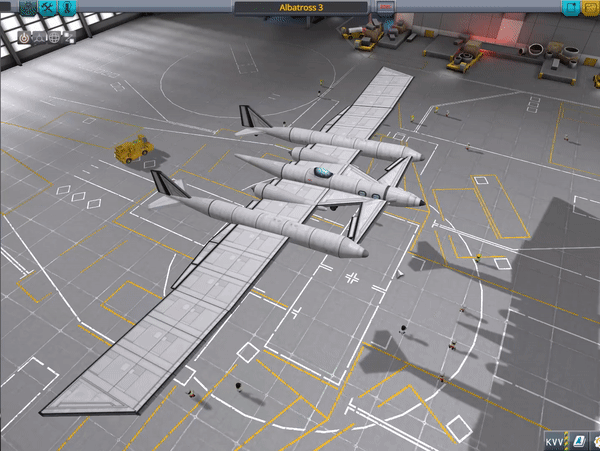
Finally, it’s important to mention that the modding community is incredibly efficient and creative, taking advantage of a game designed from the start to be customizable. Gameplay, content, new parts, scenarios, graphics—you name it, it’s there to shape the game of your dreams, with your constraints, desires, and goals! Now, a few images to persuade the last holdouts. Know these images? That’s normal; they are the winning images from the first screenshot mini-contest 😛



